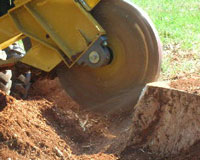Over 250 million ash trees have been killed by the emerald ash borer.
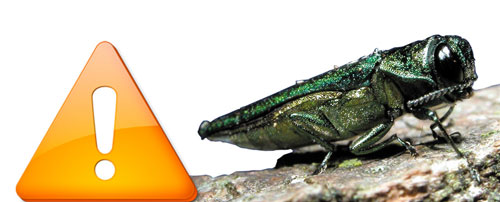
Mile High Tree Care has the cure…
By the time you finish reading this, 6.3 ash trees will have died due to widespread EAB infestations.
M ost of us are unaware of what type of tree has been living on our front lawns all these years. It’s of no major concern to most of us. As long as it’s alive and beautiful there’s no reason to think twice about it.
It’s not until you see your tree’s leaves slowly browning, forming holes, and it’s bark deteriorating that you take notice. The kicker is when you find that your entire neighborhood that was once covered in up to 30% of ash tree canopy is dead, all due the Emerald Ash Borer.
Emerald ash borer (EAB) an insect native to Asia, has become a devastating pest in the Great Lakes region and Midwest part of the country, killing over 250 million ash trees since 2002. So far this pest has only been found in Boulder and northern Denver metro areas, where it has the potential to cause severe mortality to urban ash plantings. Federally enforced quarantines are in place to prevent the exportation of tree waste from the infested area. However, vigilance is always needed to prevent this pest from making its way to the entire Denver area.
What is the emerald ash borer?
Adults – The adult beetle is dark metallic green, bullet-shaped and about ½” long. The body is narrow and elongated, and the head is flat with black eyes.
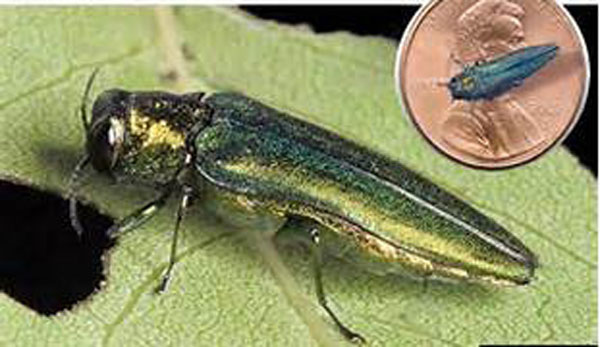
Adults begin to emerge from the trunks of ash trees after days began to avg. above 50 degrees. After emergence, adults fly into the ash canopy where they feed on leaves throughout their lives. EAB adults start mating one week after emergence, and females begin laying eggs 2–3 weeks later.
The adults of both sexes are strong fliers covering up to 5 miles with the wind.
Eggs – A female EAB may lay 100 or more eggs in her lifetime, depositing them individually or in groups on the bark along the trunk and portions of the major branches. The eggs hatch after about two weeks.
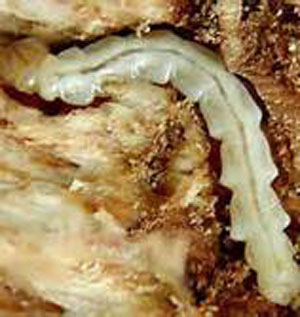
Larvae – This is the most destructive stage as newly hatched larvae bore through the bark to the phloem and outer layer of new sapwood where they feed. As they feed, the larvae create long serpentine galleries, which enlarge in width as they grow, girdling the tree, and cutting off all water and nutrient supply.
Signs and Symptoms
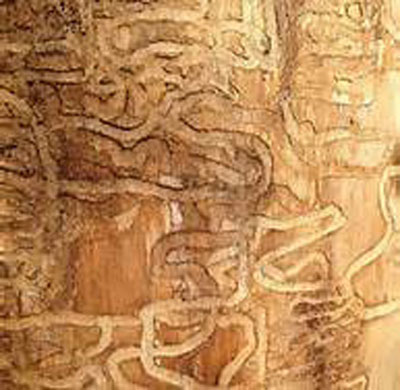
Early detection of EAB in newly infested trees can prove very difficult, particularly for the lay property owner as the trees tend to exhibit few, if any, visible external symptoms of infestation. When EAB infestations begin in an area it can take years for the first trees to die and in these cases EAB is very difficult to detect.
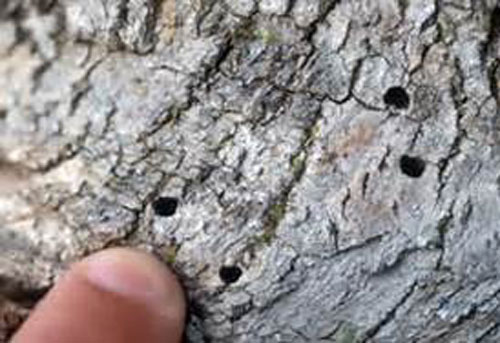
The first symptoms to occur are cracks in the bark where the individual EAB have been feeding. As EAB populations build, woodpeckers learn to feed on them and their foraging efforts are easy to detect even from long distances. When trees begin to decline rapidly with further EAB population buildup canopy thinning and suckering become more apparent. D-shaped adult emergence holes are small and hard to detect when there are few, but a reliable sign as populations build. Trees under attack will typically die with in 2-3 years.
Treatment
TIME TO TREAT OR DIE!!
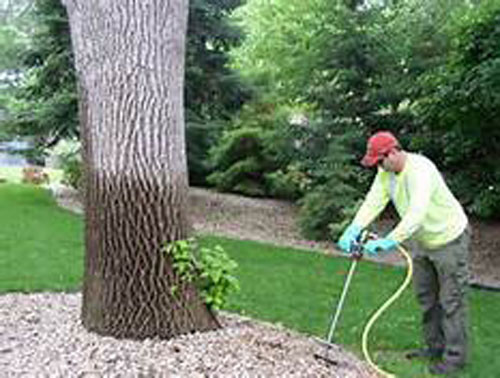
Prevention and treatment of EAB is possible by the use of systemic insecticides. Trunk injections have been shown to be the most effective and can prevent damage to the tree for up to two years. Soil injections are another option for the prevention of EAB.

These insecticides are injected directly into the soil surrounding the base of the tree, and are then transported through the rest of the tree via the roots, but have only a 1 year residual. Deep root fertilization can also be important part to help maintain the tree’s health and vigor, or to help the tree recover if an attack is already present.
Emerald Ash Borer VS. Ash/Lilac Borer
EAB VS. Ash/lilac borer- Both pests are very destructive to the health of ash trees. There are some main differences between the two.
EAB can take only 2 years to kill a mature ash tree, ash/lilac borer can take 5 or more years
Trunk injection is the only know way to treat for both. Soil injections have not been shown effective on ash/lilac borers.

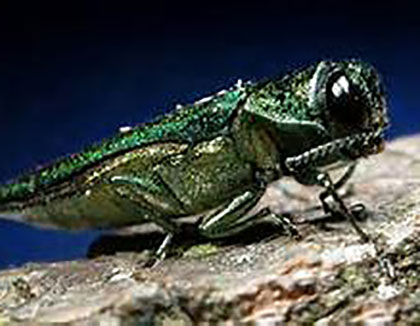
EAB is harder to diagnose because the insect’s larva begins feeding higher in the canopy, the lilac/ash borer is usually seen in the main lower crotches of the tree. The exit holes of the EAB are small and D-shaped, the ash/ lilac borer’s are large and a very irregular shape.
EAB is a very small dark green beetle. Ash/ lilac borers resemble a large paper wasp.
Ash/lilac borer is already very wide spread across the metro area with approx. ½ the ash population already infected, this weakens the ash’s natural defenses and may make the tree more susceptible to an EAB attack and may inhibit the ability of the trees uptake of systemic insecticides.
Preservation
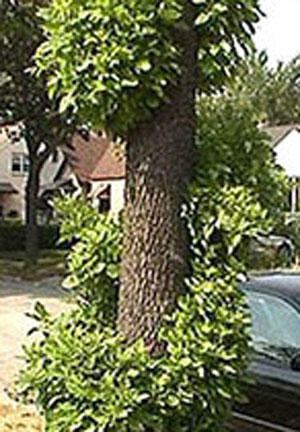
We at Mile High Tree Care are dedicated to the preservation of your urban forest!! If you think you may have a ash tree in your yard, or need help identifying your trees as ash. Please call immediately for a free estimate, or if you need further information please visit our web site at milehightreecare.com. The right insecticide, applied properly and timely, will prevent EAB from attacking an uninfected ash tree, exterminate light to moderate EAB infestation and save the tree. These insecticidal protocols, if maintained, will prevent destruction of an ash tree by EAB indefinitely.
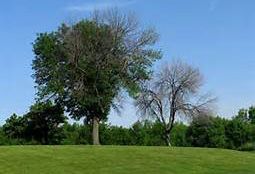
Mile High Tree Care will save any Ash tree in Denver metro from EAB that is not significantly infested, if the tree becomes damaged by EAB to the point of removal, we will apply the treatment fee to the cost of removal of the tree. Mile High Tree Care has cared for and protected over 250,000 properties in the last 15 years from other harmful insects and disease. Let our expertise and knowledge take care of yours!!!

